
Production still from “A Wrinkle in Time,” the movie.
“A Wrinkle in Time” is an upcoming American science fantasy adventure film directed by Ava DuVernay from a screenplay written by Jennifer Lee, and based on the 1962 novel of the same name by Madeleine L’Engle. Several concepts from the book and film connect to STEM subjects, even digital fabrication practices.
PREMISE
After learning that her astrophysicist father is being held captive on a distant planet deep in the grip of a universe-spanning evil, Meg Murry works with her highly intelligent younger brother Charles Wallace, her classmate Calvin O’Keefe, and three astral travelers, Mrs. Which, Mrs. Who and Mrs. Whatsit, to save him.
We took a time wrinkle as well as a space wrinkle. It’s very easy to do if you just know how. – Madeleine L’Engle
The notion of someone “wrinkling time” can be explored in several ways, including through geometry and tensegrity, which is a structural principle based on the use of isolated components in compression inside a net of continuous tension (see image below). Tenegrity structures can be transformed or wrinkled to demonstrate how geometric objects connect and move in space.
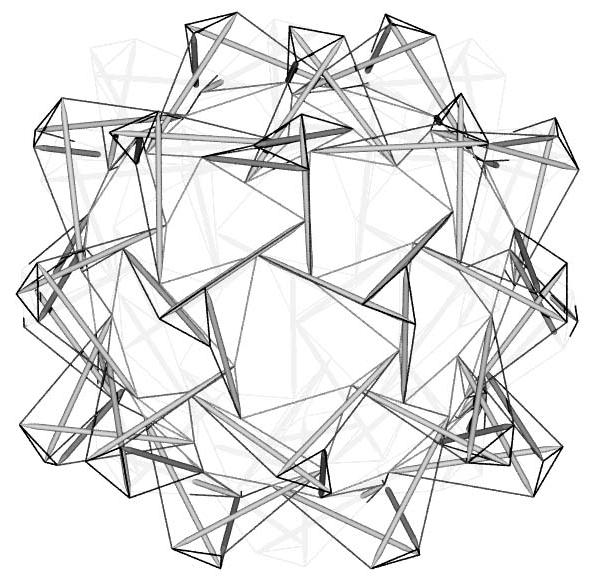
An example of tensegrity (i.e., with vectors)
The structure above shows us math terms such as vectors, which are objects that have both a magnitude and a direction. By working with just the geometric definition of the magnitude and direction of vectors, we were able to define operations such as addition, subtraction, and multiplication by scalars.
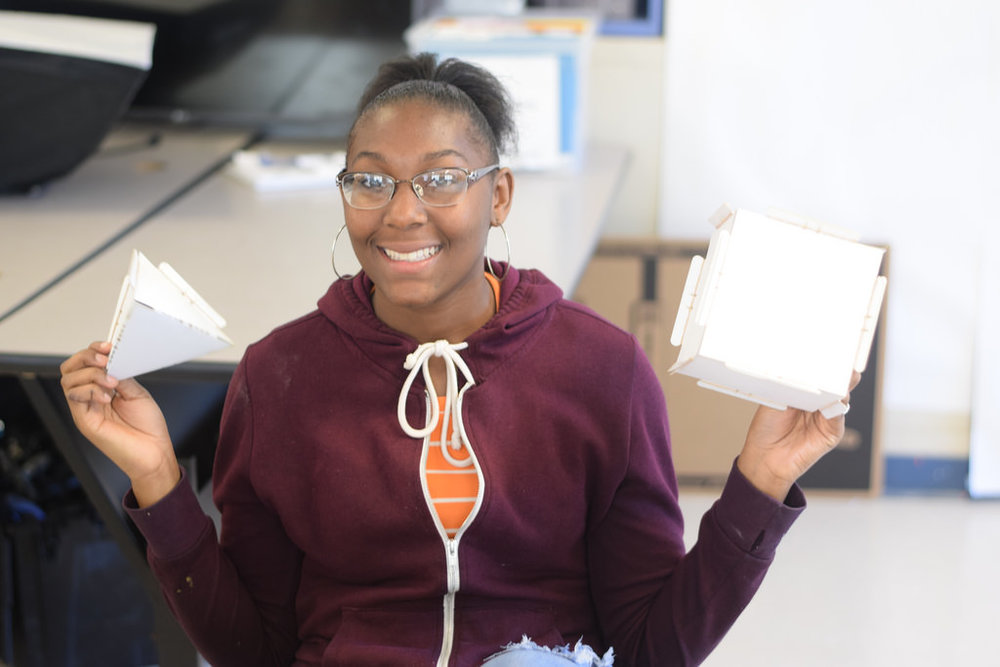
Student presenting her GeoConstructix project at MC2 in Cleveland, OH
The GeoConstructix lesson on the SCOPES-df website teaches students the inter-relationship between geometry and computer-aided design and manufacturing (CAD/CAM) techniques. This lesson helps students build a geometric paper sculptures and learn the fundamentals of geometry and engineering. Teachers can build on this project to explore tensegrity and other subjects.
OTHER STEM CONNECTIONS
English Language Arts – In addition to reading about “wrinkling time,” students can read about ‘time loops’ in “Miss Peregrine’s Home for Peculiar Children” and tensegrity robots in Neal Stephenson’s “Seveneves.” Students can write their own stories about people or objects moving through time and space using tunnels and portals. They can also watch “A Wrinkle in Time,” the movie (March 2018).
Physics – Some physicists think that the big bang may not have been the beginning of space and time, but a bridge to a pre-existing era of contraction. Instead, the evolution of the universe could be cyclic, with regularly repeating periods of expansion and contraction. Thus, the idea of wrinkling time or time loops can be demonstrated using vectors to show velocity, acceleration, energy and momentum. Learn more about these terms here.
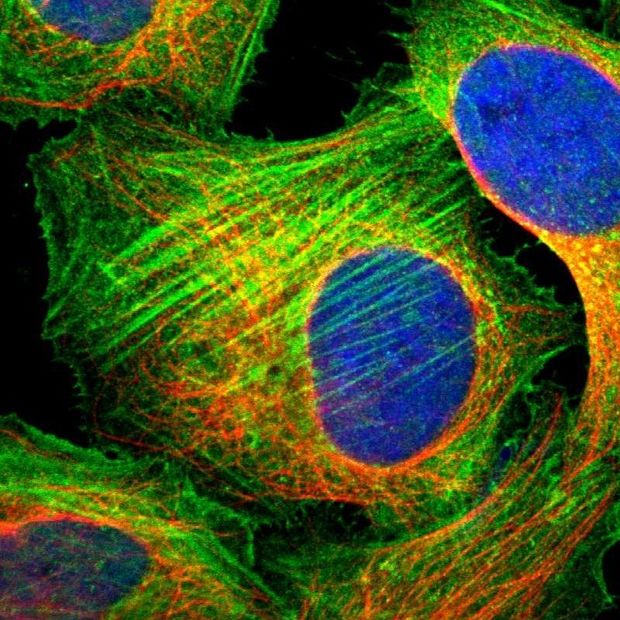
Donald Ingber’s Tensegrity Cell Structure
Biology – Students can explore how tensegrity works in a cell, change the length or mechanical properties of the different support elements in cells (e.g., microfilaments, microtubules, matrix adhesions) and immediately see how they influence cell shape and cytoskeletal organization.
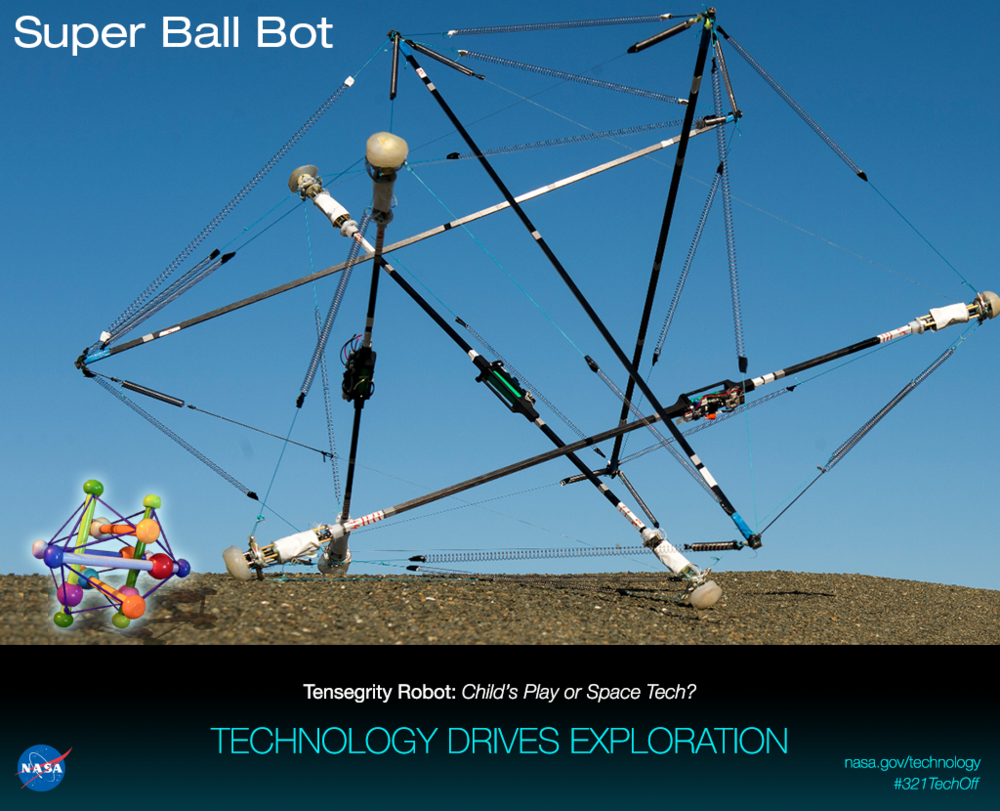
NASA’s tensegrity robot
Engineering – Students can use their tensegrity models to create a Super Ball Bot, which is a collapsible, terrestrial robot based on a tensegrity toy that is being tested by NASA for its Mission to Mars program. Students prototype a NASA orbiter, lander or rover using basic materials and electronics.
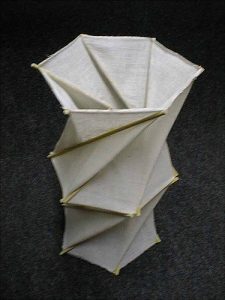
A tensegrity time tunnel using sticks, glue and fabric
Technology – Students can learn coding (computer programming) to generate vector designs that can be laser cut or 3D printed. Check out this Impossible 3D Tunnel using Scratch programming.
Materials: See GeoConstructix or use bamboo skewers and rubber tubing to create a tensegrity model. Add cut paper or fabric to the model to create a solid 3D object. Add mini-servos or motors to move the model.
Tagged: Digital Fabrication, Geometry, laser cutting, STEM
